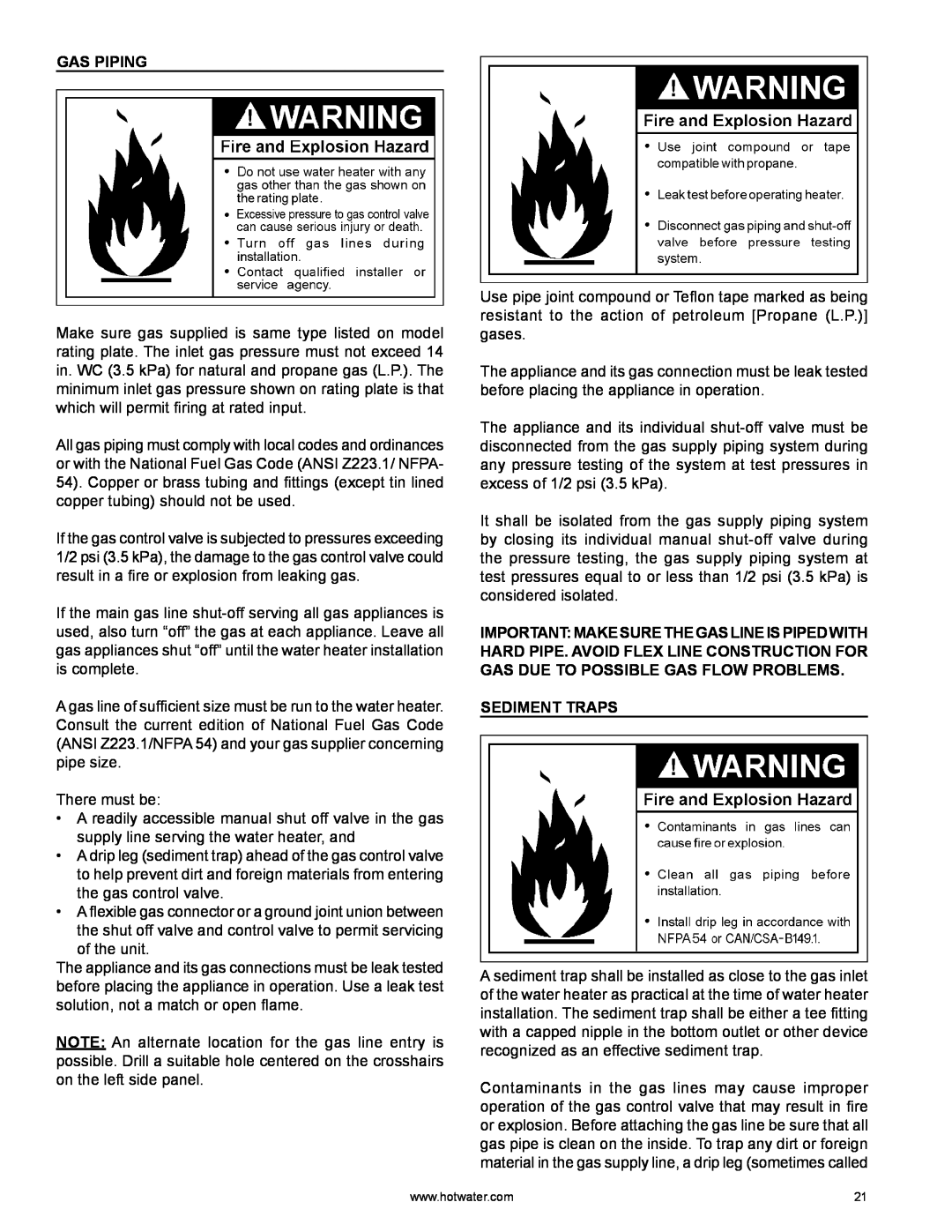
GAS PIPING
Make sure gas supplied is same type listed on model rating plate. The inlet gas pressure must not exceed 14 in. WC (3.5 kPa) for natural and propane gas (L.P.). The minimum inlet gas pressure shown on rating plate is that which will permit firing at rated input.
All gas piping must comply with local codes and ordinances or with the National Fuel Gas Code (ANSI Z223.1/ NFPA- 54). Copper or brass tubing and fittings (except tin lined copper tubing) should not be used.
If the gas control valve is subjected to pressures exceeding 1/2 psi (3.5 kPa), the damage to the gas control valve could result in a fire or explosion from leaking gas.
If the main gas line
A gas line of sufficient size must be run to the water heater. Consult the current edition of National Fuel Gas Code (ANSI Z223.1/NFPA 54) and your gas supplier concerning pipe size.
There must be:
•A readily accessible manual shut off valve in the gas supply line serving the water heater, and
•A drip leg (sediment trap) ahead of the gas control valve to help prevent dirt and foreign materials from entering the gas control valve.
•A flexible gas connector or a ground joint union between the shut off valve and control valve to permit servicing of the unit.
The appliance and its gas connections must be leak tested before placing the appliance in operation. Use a leak test solution, not a match or open flame.
NOTE: An alternate location for the gas line entry is possible. Drill a suitable hole centered on the crosshairs on the left side panel.
Use pipe joint compound or Teflon tape marked as being resistant to the action of petroleum [Propane (L.P.)] gases.
The appliance and its gas connection must be leak tested before placing the appliance in operation.
The appliance and its individual
It shall be isolated from the gas supply piping system by closing its individual manual
IMPORTANT:MAKESURETHEGASLINEISPIPEDWITH HARD PIPE. AVOID FLEX LINE CONSTRUCTION FOR GAS DUE TO POSSIBLE GAS FLOW PROBLEMS.
SEDIMENT TRAPS
A sediment trap shall be installed as close to the gas inlet of the water heater as practical at the time of water heater installation. The sediment trap shall be either a tee fitting with a capped nipple in the bottom outlet or other device recognized as an effective sediment trap.
Contaminants in the gas lines may cause improper operation of the gas control valve that may result in fire or explosion. Before attaching the gas line be sure that all gas pipe is clean on the inside. To trap any dirt or foreign material in the gas supply line, a drip leg (sometimes called
www.hotwater.com | 21 |
